Register now and start:
- Accessing PAR Training
- Shopping PAR products & tools
- Using online assessments with PARiConnect


Whether you are assessing for a learning disability, compiling the right interventions for a student with emotional disturbance, trying to get your student qualified for special education, guiding a gifted teen, or helping a college-age student find the right major, our tailored and effective solutions are designed to support you.
Our comprehensive suite of psychological assessments and resources will provide the efficiency and effectiveness required in working with today’s student populations.
Our solutions enhance student success, offer customizable assessment tools, and provide training for school psychologists and other education-based mental health professionals.

Our PAR product solutions facilitate interventions, empowering you to make informed decisions and get your students the support they need.

We can develop a comprehensive suite of assessment instruments that will meet the needs of your particular school or institution.

We offer no-cost training on many of our instruments, which can be accessed by individuals, or seamlessly integrated into district-wide initiatives.
We understand that your time is valuable, and your resources are limited. PAR is here to help you extend your reach and make a difference within the constraints of the educational organization you work in.
Facing a new mandate to test for dyslexia? Starting a gifted program? Has a traumatic event impacted your students? Whatever challenges you’re facing, we can support you. PAR has many tools that can help you screen and measure your students for various learning and mental health challenges.
Receive benefits and support resources such as:
By integrating PAR's solutions, you can focus more on students and less on administrative tasks.
Top Picks from PAR: Recommended Products Just for You »
Working through the process to get your students with special needs the best educational support and services is your daily challenge. Integrating PAR assessments into your special ed program will provide important data to lay the foundation for IEPs. Our scientifically valid assessments can be an important part of supporting students across your entire district.
Let PAR assessments help you overcome some of your challenges:
Did you know that when you call our Customer Support team you never get routed through a phone tree? Speak to a live person within seconds of calling us!
Top Picks from PAR: Recommended Products Just for You »
With tight budgets, staffing constraints and the growing number of students needing support services, look to the leader in scientifically valid assessment tools to obtain insight that will make a difference in determining what interventions students need to be successful.
Implement PAR assessment instruments into your district and receive these benefits:
Our team of assessment advisors are well-versed in the challenges your school district faces, with many of them having worked in school systems prior to joining PAR. We welcome a conversation on how to integrate PAR assessment tools into your district.
Top Picks from PAR: Recommended Products Just for Your Schools »
Your high schoolers rely on you to support their efforts in selecting the right major, the right school, and the right career. While you may not have all the answers, PAR offers the Self-Directed Search. The SDS is a tool that allows your students to explore their options and get excited for what their future may hold, all based on their personality.
Here are some features of the SDS:
Yours is a vital role in ensuring college freshmen not only acclimate to your university or college but also receive resources to set them up for success. PAR offers many tools that can be administered by most school leaders and easily added into your FYE curriculum.
Here are some ways that we support you:
Our tools can help you guide students to the right career based on their interests or uncover undiagnosed issues that can negatively impact their path to graduation.
Top Picks from PAR: Recommended Products Just for You »
It’s crucial to educate your students on the realities in the field of psychological assessment and give them a foundation they’ll use again and again in their careers. When they learn about and use valid, reliable, fully standardized instruments, they’ll enter the field with the knowledge they need to provide the highest standard of care to their own patients and conduct reliable, impactful research.
Implement PAR assessments instruments into your curriculum and receive these benefits:
Partner with PAR to elevate your curriculum, ensuring precision, compliance, and success in every project.
Top Picks from PAR: Recommended Products Just for Your Schools Programs»
As you work with students with possible or diagnosed motoric or speech problems, selecting the best assessments to uncover the root cause of learning issues is important. PAR instruments help you diagnose learning delays, develop interventions for your plans, and assist in monitoring progress.
Rely on PAR solutions and support resources such as:
As an expert in learning disabilities, teaching methods, and academic testing requirements, let PAR be your assessment partner to help you pinpoint learning and behavioral challenges. Our tests help you diagnose learning delays, develop interventions for your plans, and assist in monitoring progress.
Rely on PAR solutions and support resources such as:
Top Picks from PAR: Recommended Products Just for You »
PAR is an approved application partner with Clever—the leading platform for secure digital learning in K–12 education. Our single sign on (SSO) experience from within Clever connects seamlessly to PARiConnect, making it that much easier for school districts looking to bring PAR’s trusted assessment solutions into their schools.
Interested in integrating your Clever experience with PAR? Visit our Clever page to submit the form and an assessment professional will be in touch.

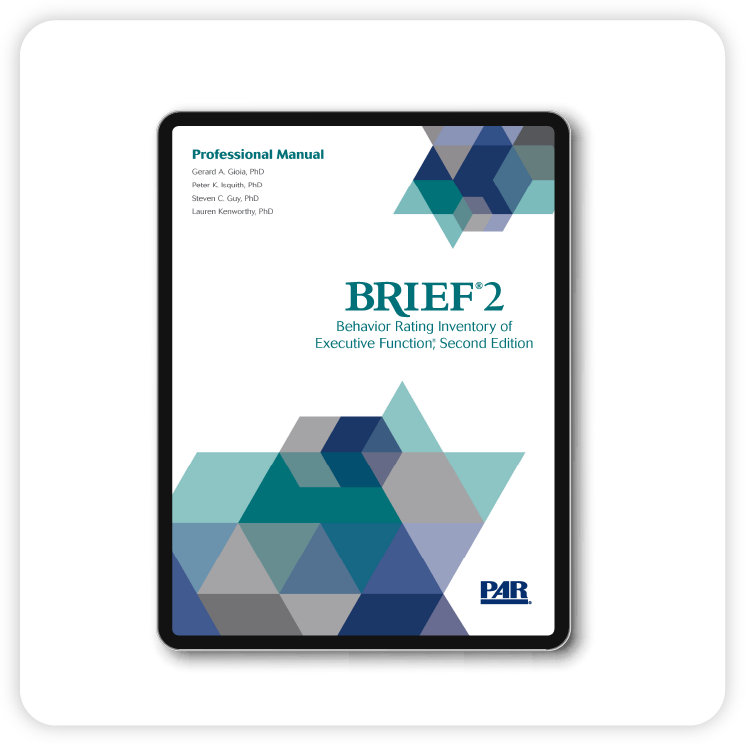
The Behavior Rating Inventory of Executive Function, Second Edition, is a proven measure of executive functioning across the life span including the BRIEF-P for preschool age students and the BRIEF2A for students transitioning out of high school. Use it as part of your battery with students with suspected self-regulation concerns such as autism, ADHD, and learning disabilities.
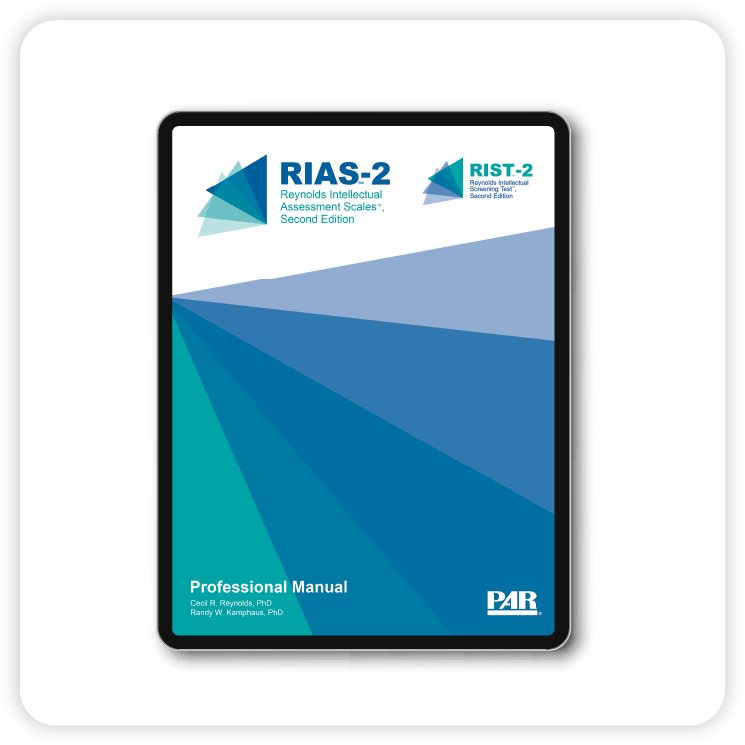
The Reynolds Intellectual Assessment Scales, Second Edition, is a reliable and valid measurement of g including verbal and nonverbal processing speed. Use it as a stand-alone intellectual assessment or as part of a larger battery to help diagnose intellectual or learning disabilities, and as a way to determine educational placement. Administer digitally or on paper.
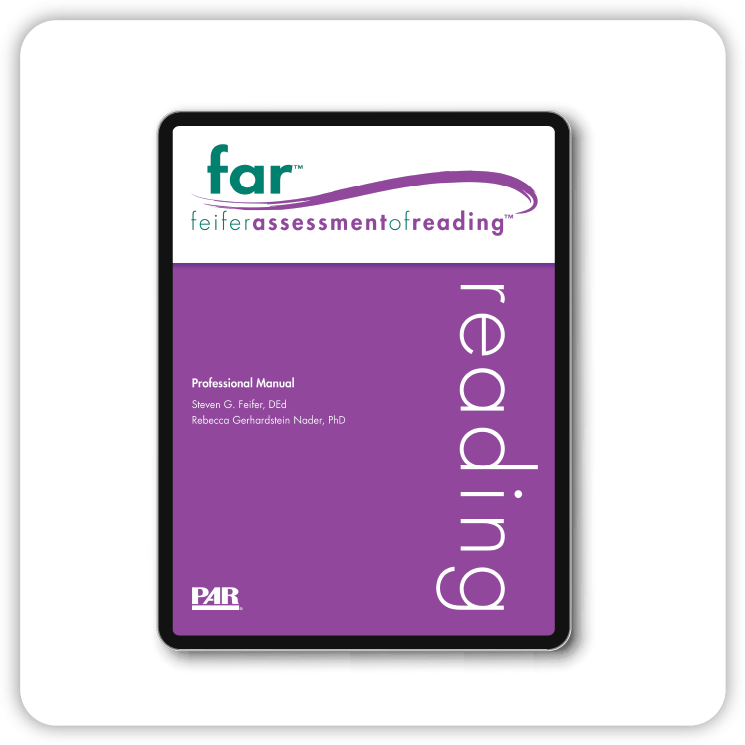
The Feifer Assessment of Reading doesn’t just indicate IF a student may have a reading disorder—it goes deeper to tell you WHY the student is struggling—identifying likely dyslexic subtypes. The FAR can measure for dysphonetic dyslexia, surface dyslexia, mixed dyslexia, and reading comprehension deficits, informing decisions about appropriate interventions.
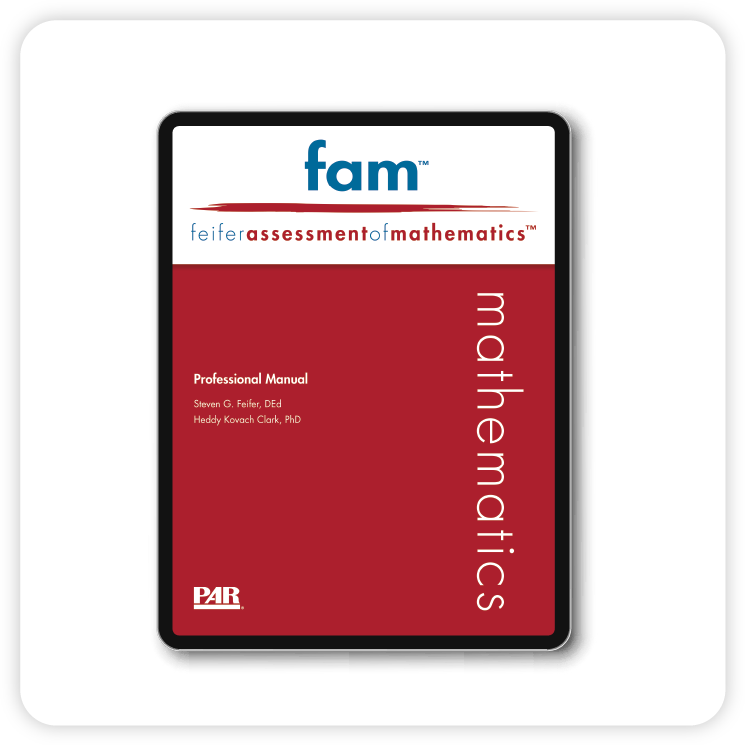
The Feifer Assessment of Mathematics has advantages over traditional academic tests because you learn WHY the student is where they are, without having to administer multiple tests to find out. The FAM can identify the specific type of dyscalculia, whether it is verbal, procedural, or semantic. Plus, you receive targeted interventions that can be used to build an IEP.
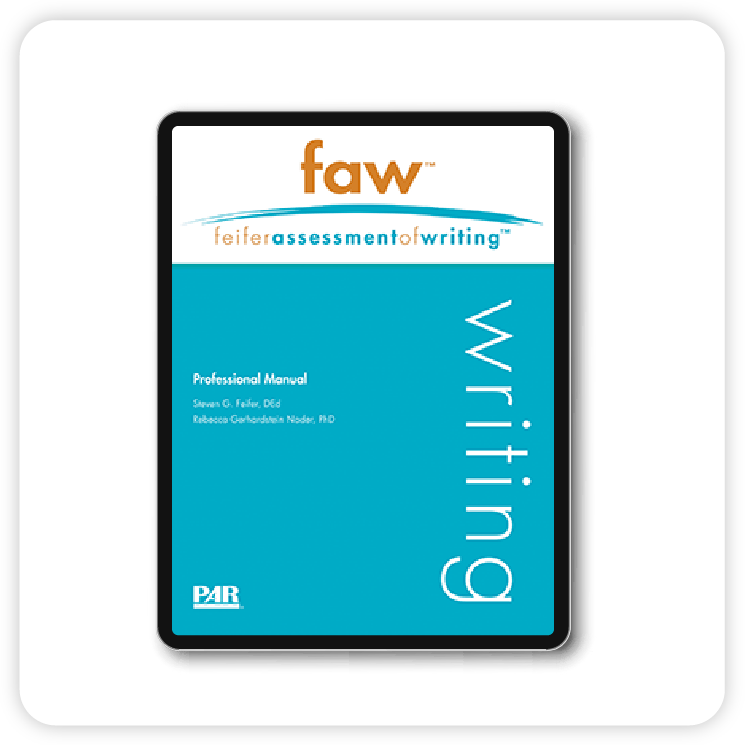
Is it a cognitive, linguistic, or motoric issue affecting a student's writing skills? Find out with the Feifer Assessment of Writing, a diagnostic achievement test designed to examine the underlying processes that support proficient written language skills. The FAW can identify the possibility of dysgraphia, and determine the specific subtype (graphomotor, executive, and dyslexic).
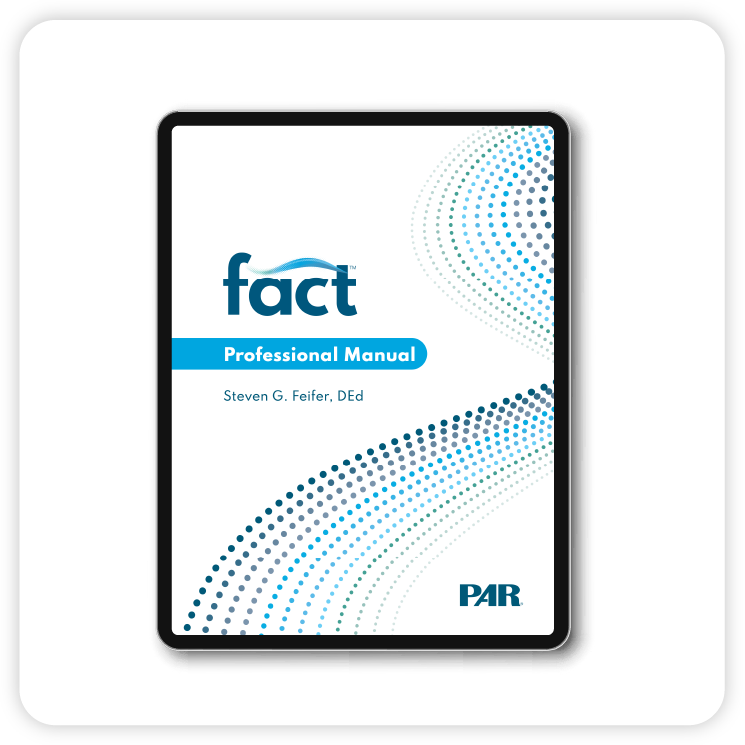
The Feifer Assessment of Childhood Trauma is the only instrument measuring how stress and trauma impact academic, behavioral, emotional, and physiological functioning in school-based settings. The FACT provides recommendations to help with IEP and 504 plans. Use to screen children within a multi-tiered system of support (MTSS) delivery model.
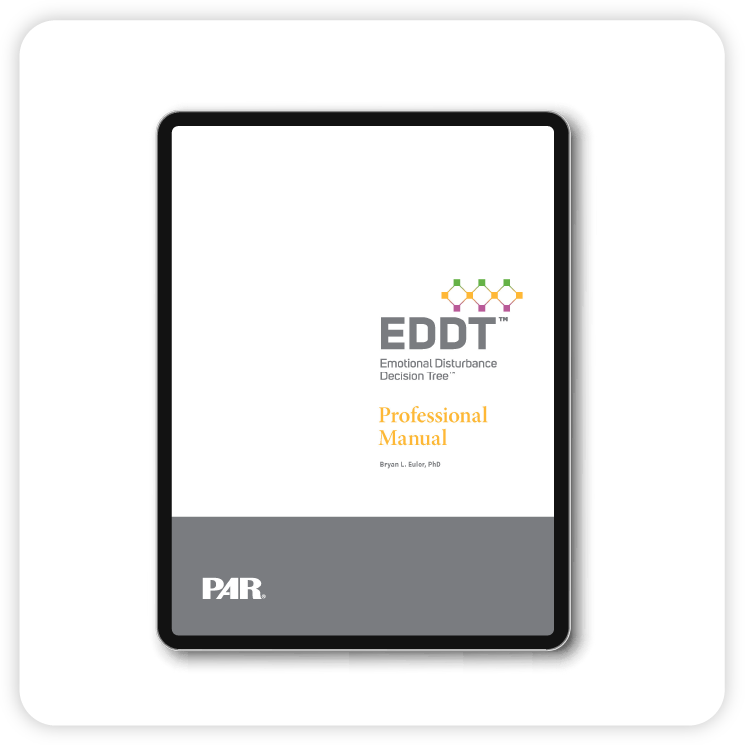
The Emotional Disturbance Decision Tree makes it easier to determine if your student meets federal criteria to qualify for special education services because it maps directly to IDEA criteria. By assessing from the teacher, parent, and student perspectives, it addresses the broad emotional and behavioral nuances of children who may require special education services for emotional disturbance.
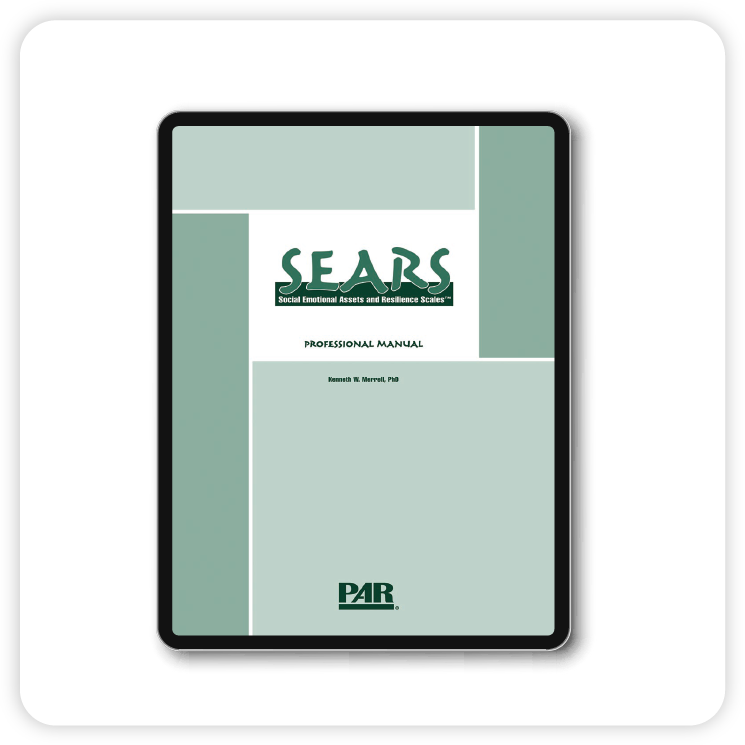
The Social Emotional Assets and Resilience Scales is a strengths-based tool that measures social–emotional assets in children and adolescents. Focusing on a child's strengths, it can be used with children and adolescents who exhibit a variety of clinical problems or who are at high risk for developing such problems. Includes separate child, adolescent, parent, and teacher forms.
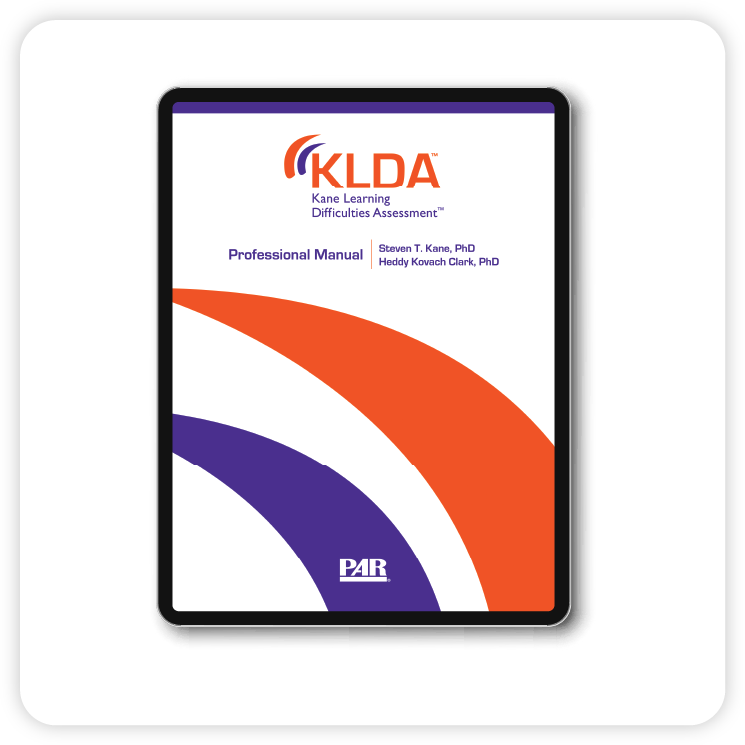
In only 15 minutes, the Kane Learning Difficulties Assessment screens college-age students for weaknesses in key areas, including reading, writing, math, listening, concentration, memory, organization, time management, oral presentation, self-control, pressure, and anxiety. It can be administered by any mental health or academic professional in a group or individual setting.
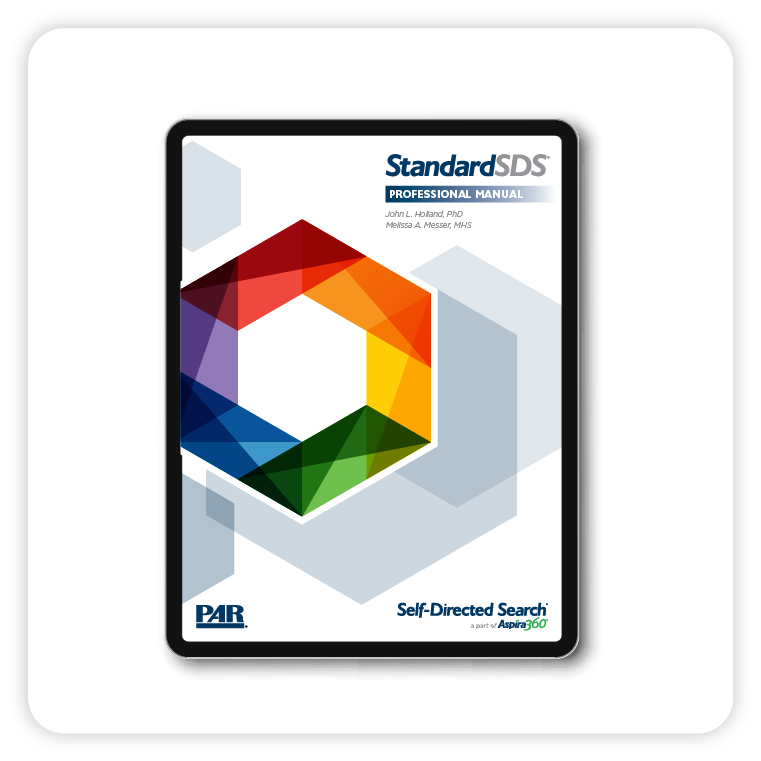
The Self-Directed Search is a proven career assessment tool that matches a student's personality to fields of study, education fields of study, and career choices. You can easily give the SDS to your high school or college students online, allowing them to feel confident about preparing for a career that fits them. The SDS then generates a customized report that can be saved, sorted, and revisited.
![]()
Gain flexibility, affordability, and choice.

Our School & Learning video playlist offers insights into some of our most popular tools for students ranging from PreK to college.

We offer onsite product-specific training, career development webinars, talent solution workshops, and author presentations.

Choose from almost 50 products in non-English languages plus gain access to other language resources.
No matter where you work—for a K-12 school district, a university, or other educational organization—having the right instruments and expertise is crucial for helping students achieve their best. Our team of highly qualified educational professionals brings extensive experience and practical insights to help you navigate complex assessment challenges effectively.
Collaborate with Us!
Let us create the perfect solution for you by customizing a battery to meet your specific needs.


Every parent or teacher has witnessed a child's messy handwriting at one point or another. But when is this issue just poor penmanship and when is it a more serious problem? It may be a neurological learning disability called dysgraphia.
This guide unpacks what dysgraphia is, how to recognize the signs of this learning disorder, and provides a roadmap on how to treat it at home and in school.
Many take writing for granted in our digital world and forget it's a skill. It requires the ability to organize thoughts in the mind and bring the muscles in the hands and fingers to construct those ideas, letter by letter, on paper.
According to the International Dyslexia Association, dysgraphia is a neurological learning disability that affects writing and usually appears when children first learn to write. This disorder can interfere with learning to spell words in writing and the speed of writing text. Children with dysgraphia may have:
Dysgraphia may happen alone or together with dyslexia (an impaired reading disability). It can also occur with a general speech or language disorder or alongside an oral and written language learning disability, such as selective language impairment (SLI). Children with these language disorders may also exhibit the same writing, reading, and related disorders as children with dysgraphia or dyslexia.
Dysgraphia is considered a specific learning disability (SLD), an umbrella term for reading, mathematics, and written expression disorders in the Diagnostic and Statistical Manual of Mental Disorders, Fifth Ed. (DSM-5). Students identified with a SLD may receive special education services under the Individuals with Disabilities Education Act (IDEA), a law that provides free and appropriate public education to children with disabilities. To determine if a child has dysgraphia and any co-occurring disorders, a comprehensive evaluation and proper diagnosis from a qualified professional is essential.
So, what causes dysgraphia? The truth is, experts are unsure. However, it is typically thought of in two ways: acquired and developmental. When a person loses their (already learned) skills in writing due to a brain injury, disease, or degenerative condition, this is considered acquired dysgraphia. Developmental dysgraphia is when a child has problems attaining writing skills, which we focus on in this article.
Dysgraphia is usually diagnosed by a psychologist specializing in learning disorders. The process may also involve a team of experts, including occupational therapists, language therapists, and educational psychologists. The group uses different tools to determine a diagnosis, including:
So, what signs should a parent or teacher watch for that indicate a child should be assessed for dysgraphia? According to Understood.org and Childmind.org, some of the most common red flags include motor and cognitive challenges.
Motor issues may look like:
Cognitive (language processing skills) issues may look like:
Other indicators of dysgraphia may appear as spatial issues or other problems, including:
Children can either experience the motor or cognitive side of the disorder or both. Dysgraphia can also look different at various age levels. For example, children with dysgraphia generally struggle with writing mechanics and exhibit other fine motor impairments. In teens and adults, the learning disorder manifests as problems with grammar, syntax, comprehension, and putting thoughts on paper.
Experts find that dysgraphia tends to be poorly understood and can often go undiagnosed for years. Writing problems are also associated with continuous academic struggles and low self-esteem, which can persist into adulthood. With this in mind, evaluating and diagnosing a child early is pivotal to their academic success.
During the evaluation process, assessment tools like the Feifer Assessment of Writing (FAW) can be administered to examine the underlying processes that support written language skills. Designed to measure the three subtypes of dysgraphia (graphomotor, dyslexic, and executive), the FAW provides key information about why a student is struggling with writing. It can be used for general screening of dysgraphia or as part of a comprehensive psychological evaluation for learning disabilities.
Once a child is diagnosed with dysgraphia, the next step is for parents and teachers to collaborate with specialists, such as occupational therapists, speech and language therapists, and special education teachers. These professionals can provide valuable insights and tools for managing dysgraphia in the classroom and beyond.
Treatment methods include interventions, accommodations, and special services to manage writing-related tasks and enhance writing abilities. Under IDEA, students with learning disabilities like dysgraphia may be found eligible and in need of special education services , and if so, parents will have the opportunity to work with the child's school to develop an individualized education plan (IEP).
Writing interventions can vary based on the student’s specific concern. For example, one student may need special exercises to increase hand strength and improve muscle memory. Another student with dysgraphia may take tests by typing their work instead of writing it. Other dysgraphia treatment options may include:
Treatment measures also include parents doing activities with their children at home. Some exercises may include:
It's important to remember that dysgraphia in no way means a student is lazy, lacks intelligence, or is incapable of success. In fact, with the right support and resources, children with dysgraphia can learn to write and do very well in school. Tools like the Feifer Assessment of Writing (FAW) provide qualitative information about a student’s writing skills, allowing clinicians to dig deeper into a student’s abilities and deliver targeted interventions that help them succeed.
Treating dysgraphia is collaborative, requiring understanding and support from parents, teachers, and the broader educational community. With early intervention, specialized instruction, and a nurturing environment, children with dysgraphia can overcome their challenges and become fluent writers.